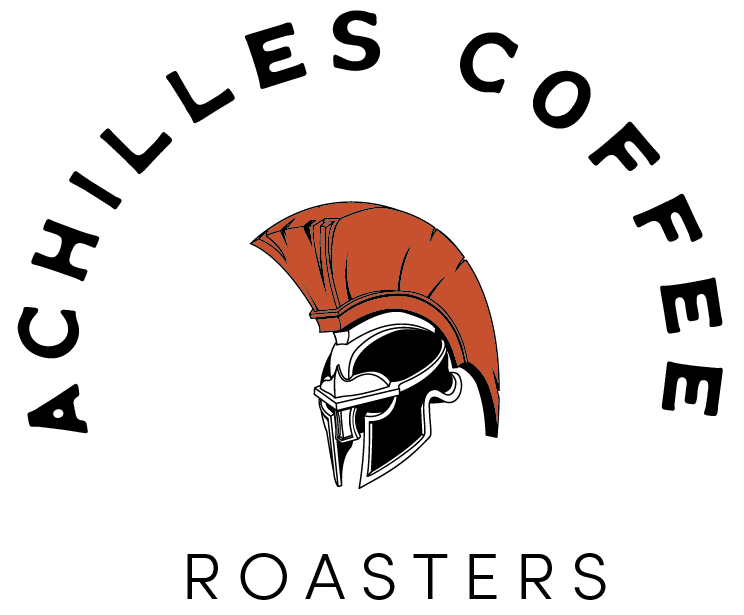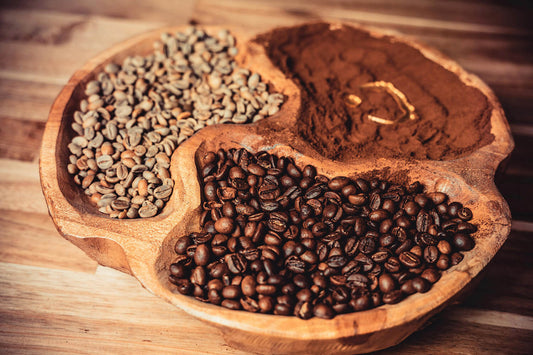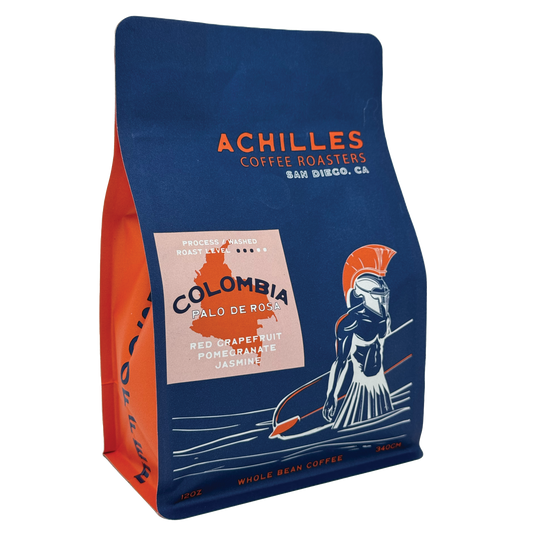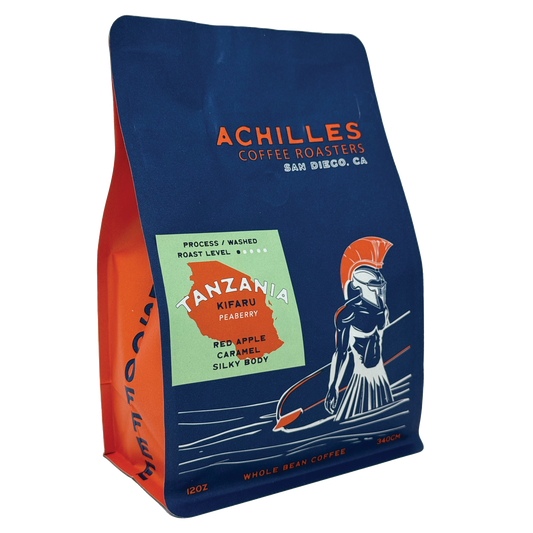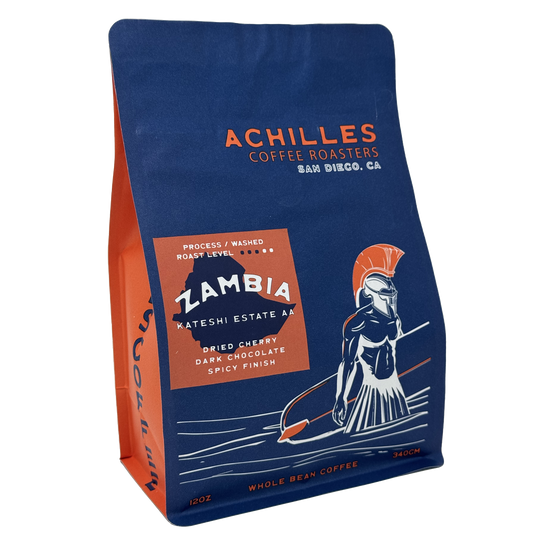If you’ve ever stood in front of a wall of coffee bags—each promising origin stories, certifications, and ethical claims—you’ve likely felt a mix of curiosity and confusion. The shelves of a specialty café or roastery can read like a foreign language: Direct Trade. Fair Trade Certified. Single Origin. Microlot. Rainforest Alliance. The modern coffee label tells a story—but not always an easy one to decode.
The question every conscious coffee drinker eventually asks is simple: What do these labels actually mean? And perhaps more importantly, do they make a difference in the cup?
In today’s coffee world, sourcing terminology is no longer just about ethics or marketing. It’s about quality, transparency, and traceability—the entire chain of decisions that shape what you taste. How your coffee is sourced determines not only how much a farmer earns, but also how the bean is selected, processed, roasted, and ultimately experienced.
The modern coffee drinker cares about all of it: Where was it grown? Who produced it? How were they paid? What makes this coffee taste the way it does? These questions connect ethics to sensory experience, bridging social impact with the pursuit of flavor excellence.
At the heart of this discussion lie two of the most widely recognized sourcing models: Fair Trade and Direct Trade. Both emerged from the same desire—to create a more equitable, transparent coffee supply chain—but they approach that mission in very different ways. Fair Trade emphasizes economic stability and social fairness through certified standards, while Direct Trade focuses on quality-driven partnerships between farmers and roasters that often bypass traditional middlemen.
Understanding the distinction between the two isn’t just about choosing a label; it’s about understanding how coffee value travels—from farm to roaster to cup. Because in coffee, as in wine or chocolate, every step along the way shapes the flavor, quality, and meaning behind what you drink.
In this post, we’ll take a deep dive into the difference between Fair Trade and Direct Trade coffee—how each model works, what they stand for, and how they influence both the lives of farmers and the taste of your morning brew. We’ll explore where their goals overlap, where they diverge, and how you can make an informed choice as a coffee lover who values both quality and conscience.
By the end, you’ll understand why these two sourcing philosophies continue to define the conversation around specialty coffee—and what they really mean for the flavor in your cup.
What Does Fair Trade Mean?
Definition & Origins
Fair Trade is a sourcing and certification system designed to improve equity in global trade. According to Wikipedia, fair trade is “a trading partnership based on dialogue, transparency and respect, that seeks greater equity in international trade.” In coffee specifically, it means that certain minimum standards apply—among them a guaranteed minimum price for certified coffees, a “social premium” that goes toward community development, democratic worker participation in cooperatives, and commitments to certain labor and environmental standards.
How it Works in Coffee
A typical fair trade coffee path goes something like this: a smallholder farmer (or smallholder co-operative) grows coffee, pools the crop with other farmers, certifies through a third-party (e.g., Fairtrade International or Fair Trade USA), then sells to an exporter/trader at or above the fair trade minimum price + premium. The premium is often earmarked for community benefits—schools, clinics, infrastructure.
For consumers, Fair Trade certification offers a level of assurance: yes, standards were audited, a premium was paid, and ostensibly the chain of custody meets defined criteria.
Impact on Quality & Flavor
Here’s an important nuance: Fair Trade’s primary focus has historically been social justice and economic fairness, not necessarily cup quality. In other words, a bean certified Fair Trade may still be quite good—but certification alone doesn’t guarantee top sensory performance. As one source notes: “What Fair Trade lacks is a standard for coffee bean quality.”
That doesn’t mean fair trade beans can’t taste excellent—many do—but when judging purely on flavor expression (clarity, unique origin character, varietal precision), the certification alone doesn’t guarantee quality.
What Does Direct Trade Mean?
Definition & Origins
Direct Trade is a sourcing approach (rather than a formal certification) built around direct relationships between roasters (or buyers) and coffee producers/farms. Wikipedia describes it as a form of procurement where upstream workers receive wages closer to end‐sale prices, and roasters often speak of it as buying “straight from the farmer”. How it Works in Coffee
In a direct trade model, a roaster (or buying company) goes beyond simply purchasing through intermediaries or large exporters. Instead they may travel to the farm, evaluate lots, negotiate prices and premiums closely tied to quality metrics, agree on processing/harvest standards, and build long-term partnerships. Because the roaster has closer visibility into the farm—yield, varietal, terroir, processing—the theory is that this leads to higher traceability, more control over bean quality, and greater financial reward for the farmer if they produce higher yield of premium lots.
Impact on Quality & Flavor
Because direct trade is often quality-driven (roasters wanting standout lots, specialty tier beans, unique processing), the expectation is that direct trade coffees more frequently deliver flavor clarity, distinctive origin character, and premium cup profiles. Many roasters tie premiums to quality scores and maintain long‐term relationships to incentivize continual improvement. That said, direct trade lacks a uniform certification standard—meaning the quality and ethical performance can vary significantly depending on the roaster.
Fair Trade vs Direct Trade: Side-by-Side Comparison
Does Sourcing Model Actually Affect Coffee Quality?
The Link Between Sourcing and Flavor
Yes—but it's nuanced. Sourcing model can influence quality by affecting the conditions under which beans are grown, processed, and selected. When a roaster visits a farm, specifies varietal/plot, monitors processing and picks lots accordingly (typical of direct trade), the chance of distinctive, high-quality beans increases. When pricing includes premiums tied to these metrics, farmers have incentive to focus on quality, not just volume.
By contrast, in some fair trade channels the bottom line is meeting certification criteria—not necessarily maximizing cup score. That means a bean can be certified ethically but still average in flavor. As one source states: “certified fair trade coffee follows a set of standards … although fair trade offers a minimum price for a commodity, it’s not necessarily equivalent to a living wage, especially if the supply chain is cloudy.”
Why It’s Not Automatic
-
Certification ≠ guarantee of cup excellence. A bean can tick the ethical boxes yet be lackluster in flavor due to varietal, processing, or roast.
-
Direct trade ≠ universally high quality. Because direct trade lacks standardized audits, some roasters may claim direct trade but not deliver transparency or ethical rigor. One article notes: “There is no single definition of direct trade nor set of common standards.”
-
Quality also depends on post-farm factors. Harvest timing, processing method, drying conditions, storage, shipping, roasting—all play a role. Sourcing model is just one piece of the equation.
-
Scale and availability. Fair trade often affects higher volume channels; some high‐end specialty farms may never reach fair trade certification due to cost or complexity, opting instead for direct trade relationships.
What to Look for As a Coffee Consumer
Questions to Ask
When you’re buying coffee and the label says “Fair Trade” or “Direct Trade,” here are smart questions that help you evaluate how these labels may affect quality and ethics:
-
For Fair Trade: Which certification is it (Fairtrade International, Fair Trade USA)? What premium was paid? How is that premium used?
-
For Direct Trade: How direct is the relationship? Does the roaster visit the farm? What is the payment/premium structure? What varietals/plots/lots are specified?
-
What varietal and origin is the coffee? Sourcing model matters, but so does farm, processing, roast date.
-
What lot size and roast date? Freshness and batch size influence flavor clarity irrespective of trade model.
-
Transparency: Does the roaster disclose lot data, farm name, processing method, payment to farmer, or photos?
-
Cup profile: Does the coffee label or roaster provide tasting notes (origin clarity, variety, process) that align with specialty standards?
Prioritize Based on Your Values
-
If ethical sourcing and farmer welfare are your top priorities: Fair Trade offers recognized certification, community development focus, and scale.
-
If flavor clarity, origin storytelling, and specialty expression matter most: Look for Direct Trade relationships with detailed transparency, high‐end lots, and roaster involvement.
-
Best case: A coffee that combines both—ethical sourcing and premium flavor—though this may come at a higher price.
Case Studies & Real-World Examples
Example—Fair Trade Certification in Practice
Fairtrade's Certified system mandates audited compliance and a social premium. However, critics argue that while it stabilizes incomes and supports community development, it may not always incentivize the absolute top tier of cup quality.
Impact on Coffee Quality: Key Dimensions
While both Fair Trade and Direct Trade aim to make coffee more ethical and sustainable, they diverge sharply when it comes to how those values translate into cup quality. The difference lies not only in how farmers are paid, but also in how beans are selected, processed, and evaluated. Let’s break down the factors that most directly shape the taste and quality of your coffee.
1. Varietal and Origin Selection
In Direct Trade models, roasters typically buy coffee from specific farms, micro-lots, or varietals—for example, celebrated cultivars like Geisha, SL-28, or Bourbon. This selective sourcing allows them to curate coffees with distinctive characteristics, such as floral aromatics, vibrant acidity, or syrupy sweetness. Because direct trade focuses on relationship-based buying, roasters can exclude lower-quality lots and prioritize unique flavor profiles that align with their brand or roasting style.
This level of selectivity gives the roaster—and by extension, the consumer—greater control over traceability and flavor clarity. Each coffee tells a story that’s not just about region (like “Ethiopia” or “Colombia”) but about a specific farm, altitude, and cultivar. These are the details that drive specialty coffee’s complexity and terroir-driven experience.
By contrast, Fair Trade-certified coffee often comes from cooperative blends. These co-ops are collections of many smallholders who combine their harvests to achieve the volume needed for export. While this model provides stability and access to markets for small farmers, it can dilute traceability and consistency. The coffee you buy might come from dozens or even hundreds of farmers, each growing different varietals under varying conditions. This creates a dependable but more generalized flavor profile—good for large-scale buyers, but less ideal for precision-focused roasters seeking singular character.
In short:
-
Direct Trade prioritizes specificity and flavor distinctiveness.
-
Fair Trade prioritizes inclusivity and collective representation.
2. Processing and Post-Harvest Handling
After harvest, how coffee is processed and dried plays a crucial role in determining its flavor profile—and here again, direct trade relationships tend to provide an advantage.
In Direct Trade, roasters often work closely with producers to define processing methods such as washed, honey, or natural—each of which highlights different flavor dimensions.
-
A washed process might enhance clarity and brightness.
-
A natural process can bring out fruit-forward sweetness and heavier body.
-
A honey process offers a syrupy mouthfeel and balanced acidity.
Because these partnerships are long-term, roasters and producers can experiment together—adjusting fermentation times, drying conditions, and moisture levels to achieve desired results. This hands-on collaboration creates a cycle of innovation, pushing quality and consistency year after year.
Fair Trade certification, on the other hand, focuses primarily on ethical and environmental standards—ensuring fair labor practices, responsible pesticide use, and sustainable land management. These are vital values, but the certification doesn’t directly govern processing for flavor quality. While many Fair Trade co-ops produce excellent coffees, the framework itself doesn’t incentivize experimentation or micro-processing for high cup scores.
Thus, while Fair Trade protects the planet and the people, Direct Trade often goes further in refining how coffee tastes.
3. Pricing Incentives and Farmer Behavior
Few factors impact coffee quality more than how farmers are paid—and how their payments are structured.
In Direct Trade, pricing is typically negotiated based on quality, not just quantity. Roasters pay premiums tied to cup score, processing innovation, or varietal rarity. The better the coffee performs in sensory evaluation (cupping), the higher the price the farmer receives. This model incentivizes producers to reinvest in better tools, processing stations, and farm maintenance—driving a cycle of quality improvement.
For example, a farmer might earn double or triple the commodity rate if their coffee scores above 85 points on the Specialty Coffee Association (SCA) scale. This rewards not only ethical labor but also craftsmanship, skill, and innovation.
Fair Trade, by contrast, guarantees a minimum price designed to protect farmers from volatile commodity markets. It ensures stability and a baseline income—a critical safety net in developing regions. However, Fair Trade’s pricing model does not necessarily reward exceptional cup quality. A farmer producing an 80-point coffee and another producing an 88-point coffee might both receive the same base rate under certification rules.
In effect:
-
Fair Trade stabilizes income.
-
Direct Trade motivates excellence.
4. Roaster Involvement and Transparency
Transparency is the soul of Direct Trade. Roasters typically visit farms regularly, cup lots at origin, and maintain direct communication with producers. They can trace each bag back to a farmer, plot, or lot number—and often share that information openly with customers.
This transparency strengthens trust and accountability. It allows roasters to monitor farming practices, ensure ethical standards firsthand, and guarantee quality at every stage. For consumers, that means you can look at a coffee bag and see not just a region, but a producer’s name, altitude, and process—a level of detail that elevates appreciation and connection.
Fair Trade certification, while also promoting ethical practices, operates on a larger and more bureaucratic scale. It ensures that co-ops and exporters meet social and environmental guidelines, but it doesn’t require roasters to have direct contact with individual producers. The supply chain typically includes more intermediaries—exporters, importers, certifiers—making it less personal and, at times, less transparent in terms of flavor sourcing.
So while both models support transparency in principle, Direct Trade provides it in practice—lot by lot, visit by visit.
5. Scale and Exclusivity
One of the defining contrasts between the two systems is scale.
Direct Trade thrives on small-batch exclusivity. Roasters might purchase a few bags—or even a single lot—from a specific farm. These coffees often feature on limited release menus, labeled as microlots or nano-lots. The results are exceptional in flavor and story but limited in volume. This scarcity contributes to higher prices and the sense of artisanal craft associated with specialty coffee.
Fair Trade, conversely, operates on scale. Its cooperative model allows many small farmers to access international markets collectively, improving overall livelihoods. The trade-off is variability. With coffee sourced from numerous smallholders, even within a single co-op, flavor profiles can shift harvest to harvest. Consistency and traceability may take a back seat to inclusivity and accessibility.
In short:
-
Direct Trade = small scale, high precision, limited availability, exceptional flavor.
-
Fair Trade = broad scale, reliable supply, wider farmer reach, moderate flavor consistency.
Final Thought
Both sourcing systems have immense value—Fair Trade uplifts communities, while Direct Trade elevates quality and transparency. But when it comes specifically to coffee quality, the structure of Direct Trade gives it an edge: it aligns incentives around excellence, specificity, and innovation. Fair Trade ensures fairness and access, but Direct Trade rewards artistry and collaboration.
Ultimately, the best cup of coffee comes from a sourcing model that balances both ethics and excellence—supporting people and planet while celebrating the extraordinary flavors they can produce together.
Challenges & Criticisms
Fair Trade Challenges
-
Some critics argue that “fair trade doesn’t necessarily reflect the best quality beans.
-
Certification fees, cost burdens, and inability to sell all production as certified can limit benefit to farmers.
-
Quality control tied to cup profile is less emphasized in many fair trade models.
Direct Trade Challenges
-
Lack of standardized definitions and third-party verification means “direct trade” can be used as marketing without consistent ethical/quality standards.
-
Direct trade relationships often favor premium lots/farms—thus not always accessible to all farmers—and may focus on fewer producers.
What It Really Means for Your Coffee Cup
When you buy a bag of beans, the sourcing label is an indicator, not a guarantee. Here’s what you might experience flavor-wise:
-
A fair trade certified coffee might deliver solid cup quality, decent flavor, and ethical comfort—but may not surprise you with rare origin complexity or microlot nuances.
-
A well-executed direct trade coffee, especially from a roaster that invests in the farm relationship, might offer standout flavor, unique processing, vivid origin clarity, and a premium experience—but likely at a higher price and smaller availability.
-
Best flavor value often comes when sourcing model, freshness, roasting quality, origin, and brewing all come together. Sourcing is one factor among many in the chain.
Tips for Coffee Buyers
-
Check roast date: Regardless of sourcing model, freshness is vital.
-
Look for lot/producer transparency: Bag or roaster provides farm, lot, process details.
-
Ask for tasting notes: Distinct aromatics, flavor clarity, origin expression tell you something is quality-oriented.
-
Support roasters/farms with published payment data: Transparency in how much was paid to producers is a good sign.
-
Balance ethics and flavor: Determine your priority (ethical sourcing vs flavor exploration) and buy accordingly.
-
Brew to reveal quality: Higher quality beans shine with careful brewing—single origin, good roast, and method matter.
Conclusion
In the end, “Direct Trade vs Fair Trade” is not a battle of better vs worse but a reflection of different sourcing philosophies with distinct implications for farmer welfare, traceability, community effect, and flavor potential. Fair Trade gives you audited assurance of certain social and environmental standards. Direct Trade offers the possibility of deeper relationships, traceability, and premium flavor—but with more variability and fewer guarantees. As a consumer and coffee lover, your power lies in understanding what the label means, aligning it with your values, and pairing it with roasting and brewing care. When you combine ethical sourcing, high quality beans, skilled roasting, and precise brewing, what ends up in your cup is more than beverage—it’s a story of origin, a partnership of people, and a taste of possibility.
